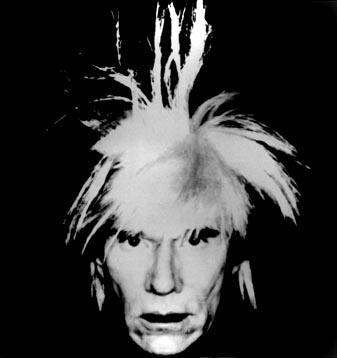Andy Warhol

Self-Portrait 1986
synthetic polymer paint and silkscreen on canvas
203,2 x 193 cm
The Andy Warhol Museum, Pittsburgh
photo: Richard Stoner
Over the course of a 30-year-long career, Andy Warhol transformed contemporary
art. The power of his work comes from its concentration on fundamental human
themes - the beauty and glamour of youth and fame, material culture and
the passing of time, and the presence of
death. Employing mass-production techniques, Warhol challenged preconceived
notions about the nature of art and erased traditional distinctions between
fine art and popular culture.
Born in Pittsburgh in 1928, Andy Warhol moved to New York in 1949, where
he became one of the country's leading commercial artists. By the end of
the '50 s Warhol had turned his attention to fine art and by the '60 s he
was exhibiting his Pop paintings and sculpture - including the now-famous
Brillo Boxes, Marilyns and Campbell's Soup Cans - in New York and Los Angeles.
The exhibition shows iconic works from the 1950 s, '60 s, and '70 s, including
early pop portraits, cow wallpaper, cloud pillows, skulls, disaster paintings,
films and source material. It provides a unique opportunity for people to
see the full spectrum of work by one of the most influential artists of
the late 20 th century, who created new ways of looking at both art and
life.

Silver Clouds, 1966
helium-filled metalized plastic film
91,4 x 129,5 cms each
Refabricated for the Andy Warhol Museum, 1994
Photo: Paul Rocheleau |

